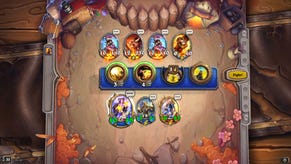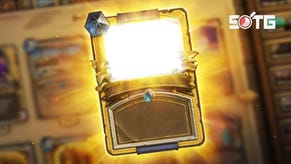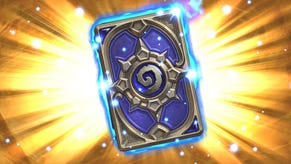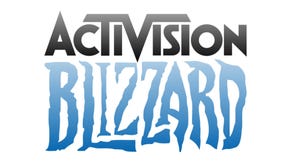Why Hearthstone's Wild mode won't be a graveyard for excess
Don't fear the creeper.
As Hearthstone's latest expansion - Whispers of the Old Gods - looms large on the horizon, time is ticking for some of the card game's most iconic decks. When the expansion becomes available sometime between the end of April and the beginning of May, Blizzard's solution to keeping competitive play under control - despite an ever-expanding card pool - will come into effect.
At that point, the much-touted Standard mode will launch and exclude cards issued in expansion packs older than two years, while cards from the vanilla game's Classic and Basic sets - along with the latest expansions - will remain. The new Wild mode, however, will become a place where anything goes, and any card can be played. These two ranking formats will run side by side, and are officially recognised as equally legitimate paths to ranked glory, but only the Standard rule-set will be used for official tournaments.
In a sense, then, the coming of the Old Gods heralds the end of a spotlight that's shone brightest not just on some of the inn's most famous inhabitants, but also on wider metas so deeply ingrained that it's hard to imagine they weren't a part of the game's original release. The Curse of Naxxramas and Goblins vs Gnomes sets will be the first to be retired from Standard play, taking with them a handful of infamous - not to mention ubiquitous - cards like Dr. Boom.

"I think that in some ways it's unfortunate that Dr Boom is as powerful as he is, because he's able to be played in so many different types of decks that you see him too often," Hearthstone's lead designer Ben Brode explained at a recent event held at Blizzard's Irvine campus.
"He's not so far above the curve that it's awful, it's just that he's far enough above - and not narrow enough - that you see him too much. That's my biggest beef with Dr Boom. When we release new cards, they have to change the meta somehow. As there are more cards to compete with, these [new] cards have to be better or you're not going to play them, and nothing changes. So Standard should be a place where we can release new cards without power-creep making everything else obsolete."
The issue of untamed power-creep was always going to be an issue here, as anyone familiar with other collectible card games will attest to. Yu-Gi-Oh is a particularly egregious offender, with one card (Beast King Barbaros) fulfilling the roles of four cards from the original release set, and without any accompanying drawbacks to negate this strength.
While the format split will provide an elegant way of keeping the number of interactions in the card pool manageable, the split between Standard and Wild also creates an extra design challenge for the developers. Brode is keen to ensure that the departing cards won't create any gaps in a player's arsenal, once stronger decks from the next expansion begin appearing on the ladder.
"We had to do things like check if [players] have the tools necessary once Goblins and Naxxramas are no longer in Standard," he said. "Are there the tools for players to use, so they can handle the kinds of decks that we think are going to be made?"
If you're concerned that Standard is receiving all of the attention at the expense of your hard-earned greater card collection, Brode wants to make sure Wild is also a fun place to explore card interactions. There will be compromises, however, and that means some of the game's most fundamental cards from the Basic and Classic launch sets will be rebalanced shortly.
We're also beginning to see cards in the upcoming set that directly counter decks that would have been retired to Wild status anyway. Take the recently-revealed Secret Eater, for example, which grows in power for each enemy Secret it consumes. This one card effectively neutralises the so-called Secret Paladin, so dominant in the current metagame. The idea for Brode is not just to have new cards arrive and old ones disappear using the Standard format, but for both sides of the coin to benefit from a shifting meta.
"I'm excited about seeing more new cards, more often," Brode said. "And I'm glad that we have both options, but this Standard mode will ensure that if Piloted Shredder is at the top of the meta for three years, it's gone after that, and we're going to see something different. So there will be ways in which the Standard meta will be forced to evolve because of this rotating format."
Secret Eater is, then, indicative of the approach Blizzard wants to take in a post-Standard world. Wild won't just be the place where the publisher allows their accidentally overpowered creations of years gone by to fester and stifle the format's metagame. Instead, Wild will provide the playerbase with a gently curated space, one where ingenious deckbuilders can weave their way through an increasingly thorny tangle of cards, in order to create ever-more extraordinary inventions.
To stay on top of all the latest Hearthstone developments, take a look through our dedicated Hearthstone site MetaBomb.









